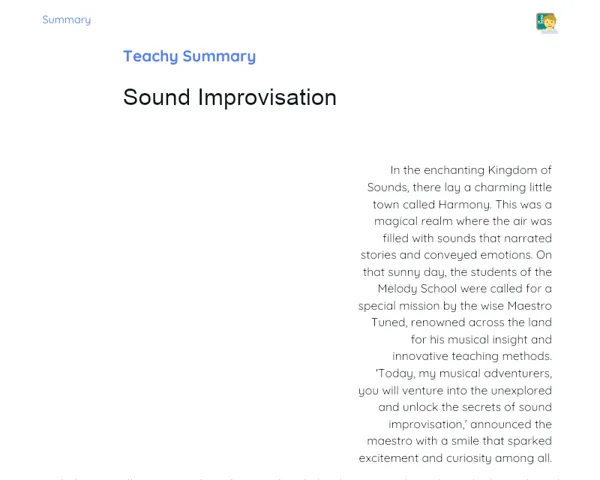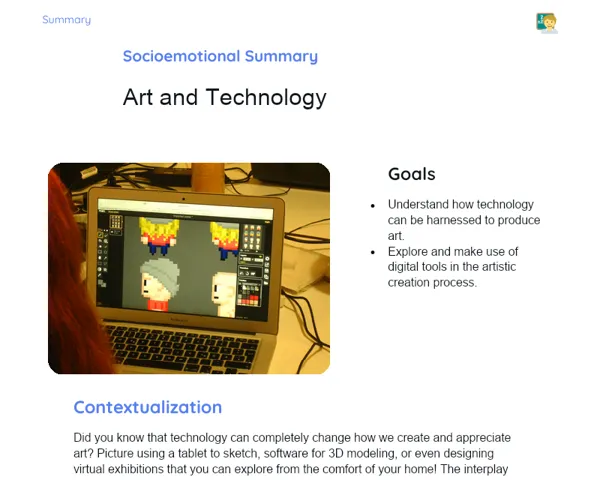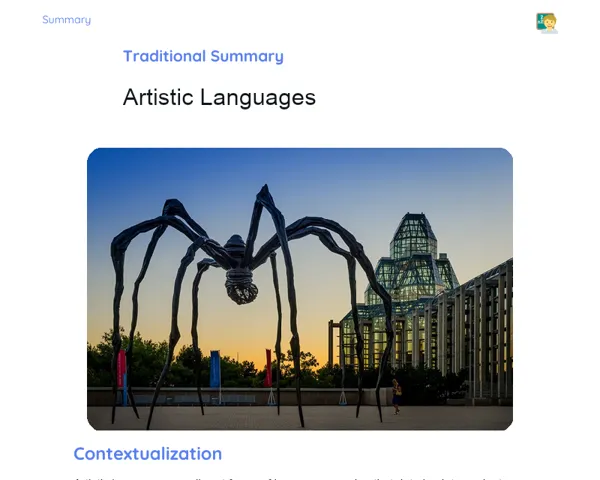Goals
1. Explore various sound sources using your own body.
2. Enhance the ability to produce sounds with claps and voice.
3. Encourage creativity in developing rhythms and sound combinations.
4. Foster body awareness through the perception of sounds made by the body.
Contextualization
Sounds are everywhere around us, from the chirping of sparrows to the pitter-patter of rain. Our bodies also offer a treasure trove of sounds waiting to be explored and creatively combined. We naturally produce sounds with our bodies, like clapping during celebrations or clicking our fingers to grab someone's attention. This kind of sound exploration is not just enjoyable but also plays a crucial role in honing our auditory and motor skills. For example, at a birthday bash, we all clap along to the birthday song; similarly, actors in theater use body sounds to elevate their performances.
Subject Relevance
To Remember!
Body Sounds
Our body serves as an incredible sound bank that can be explored in several creative ways. Sounds such as claps, finger snaps, chest beats, and vocal sounds represent just a few of the countless possibilities. We can combine these sounds to craft rhythms and music, enhancing our auditory and motor skills.
-
Claps: Produce clear and distinct sounds, often heard during celebrations and rhythmic clapping.
-
Finger snaps: Generate softer sounds but are equally significant for rhythmic layouts.
-
Chest beats: Produce deeper tones that add richness to rhythms.
-
Vocal sounds: The human voice is a versatile instrument capable of creating a wide array of sounds and melodies.
Rhythm Creation
Creating rhythms means blending various sounds in a structured and repetitive manner. By experimenting with claps, finger snaps, chest beats, and vocal sounds, students can create unique rhythmic patterns. This skill is fundamental not just in music and dance, but across different artistic modes of expression.
-
Sound combination: Mixing multiple types of sounds to forge a rhythmic pattern.
-
Repetition: Regularly repeating patterns is key to crafting coherent rhythms.
-
Synchronization: Collaborating in groups to align the sounds made by different individuals.
Auditory and Motor Perception
Auditory and motor perception refers to the skill of identifying, distinguishing, and creating sounds in a well-coordinated fashion. This ability develops through ongoing practice and by paying close attention to the nuances of the sounds we produce. It’s an invaluable skill set not only in music but also for effective communication and professions in other fields.
-
Sound identification: Recognizing and naming different categories of body sounds.
-
Coordination: Synchronizing bodily movements to produce sounds in a controlled way.
-
Attention to detail: Actively listening to understand the subtleties of the sounds made.
Practical Applications
-
Music production: Artists and sound producers leverage body sounds to develop unique music and soundscapes.
-
Theatre: Actors incorporate body sounds to enrich their performances and create immersive soundscapes.
-
Occupational therapies: Body sounds feature in therapeutic settings to promote well-being and enhance motor coordination.
Key Terms
-
Claps: Sound produced by striking hands together.
-
Finger snaps: Sound created by rubbing the thumb against other fingers.
-
Chest beats: Low sounds produced by lightly tapping the chest with hands.
-
Rhythm: Repetitive sound patterns that form a musical sequence.
-
Auditory perception: The ability to identify and distinguish between different sounds.
-
Motor perception: The ability to coordinate body movements to generate sound.
Questions for Reflections
-
How can exploring body sounds enhance your auditory and motor perception?
-
In which ways can creating rhythms with body sounds extend beyond music?
-
Do you believe the skills honed in this lesson can be beneficial in your everyday life? How?
Body Rhythm Challenge
Create and showcase a rhythm using only body sounds.
Instructions
-
Select three types of body sounds you enjoyed producing the most (e.g., claps, finger snaps, chest beats).
-
Blend these sounds to craft a distinct rhythm. Don't forget to incorporate repetition to establish a rhythmic pattern.
-
Practice the rhythm until you can consistently reproduce it.
-
Perform your rhythm in front of a family member or friend and gather feedback.
-
Write a short reflection on your experience of creating and presenting your rhythm, including any challenges faced and the learnings from this activity.



